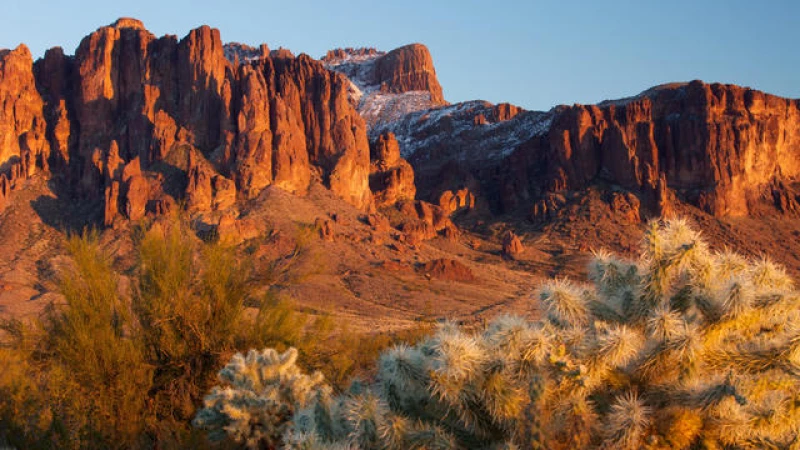An Enigmatic Sight in Arizona's Superstition Mountains
Witness a rare and captivating display in the heart of Arizona's mountains. An elusive phenomenon known as "The Cougar's Shadow" is making its biannual appearance in the Superstition Mountains, offering a unique spectacle for those who seek it.
This natural wonder, resembling the silhouette of a cougar, can only be observed during the equinoxes. The recent spring equinox, which arrived earlier than usual, unveiled this marvelous shadow that gracefully descends over Apache Junction.
Enthusiasts from all corners of the country, like Ralph Prosser, flock to the area in hopes of catching a glimpse of the mysterious feline figure.
"I'm hoping to see the elusive cat," Prosser shared with CBS affiliate KPHO.
Renowned photographer of the "Cougar's Shadow," Jack Olson, described the shadow as resembling "a cougar chasing its prey down into the bottom on the anyone."
"This is my seventh year going out there," Olson mentioned. "My wife thinks I'm crazy."
Providing updates on the emergence of this year's big cat shadow, Olson expressed on Facebook that while the shadow has started to appear, it will require another week or more to achieve a more defined form.
According to Visit Mesa, the cougar appears the third week of March and the best viewing spot is in Apache Junction at 13th Avenue and Goldfield Road.
"Timing is critical," the group says, with the last 30 minutes before the official sunset being the "prime time for viewing."
Arizona's Superstition Mountains, the home of the rare shadow event, are the result of intense volcanic activity over a long period of time, according to Arizona State Parks. The state says that around 25 million years ago, volcanoes across the area emitted 2,500 cubic miles of ash and lava and that eventually, the volcanoes collapsed into their magma chambers.
"A subsequent up-thrust of thick lava within the largest of these calderas and the forces of erosion have created the Superstition formations that we see at the park today," the state parks website says. "...While hiking in the Superstitions, one can sometimes hear rumblings similar to rolling thunder. Geologists say this results from seismic activity resonated by the canyon walls. This could explain the origin of the Apache legend that these mountains are the home of the thunder gods."







